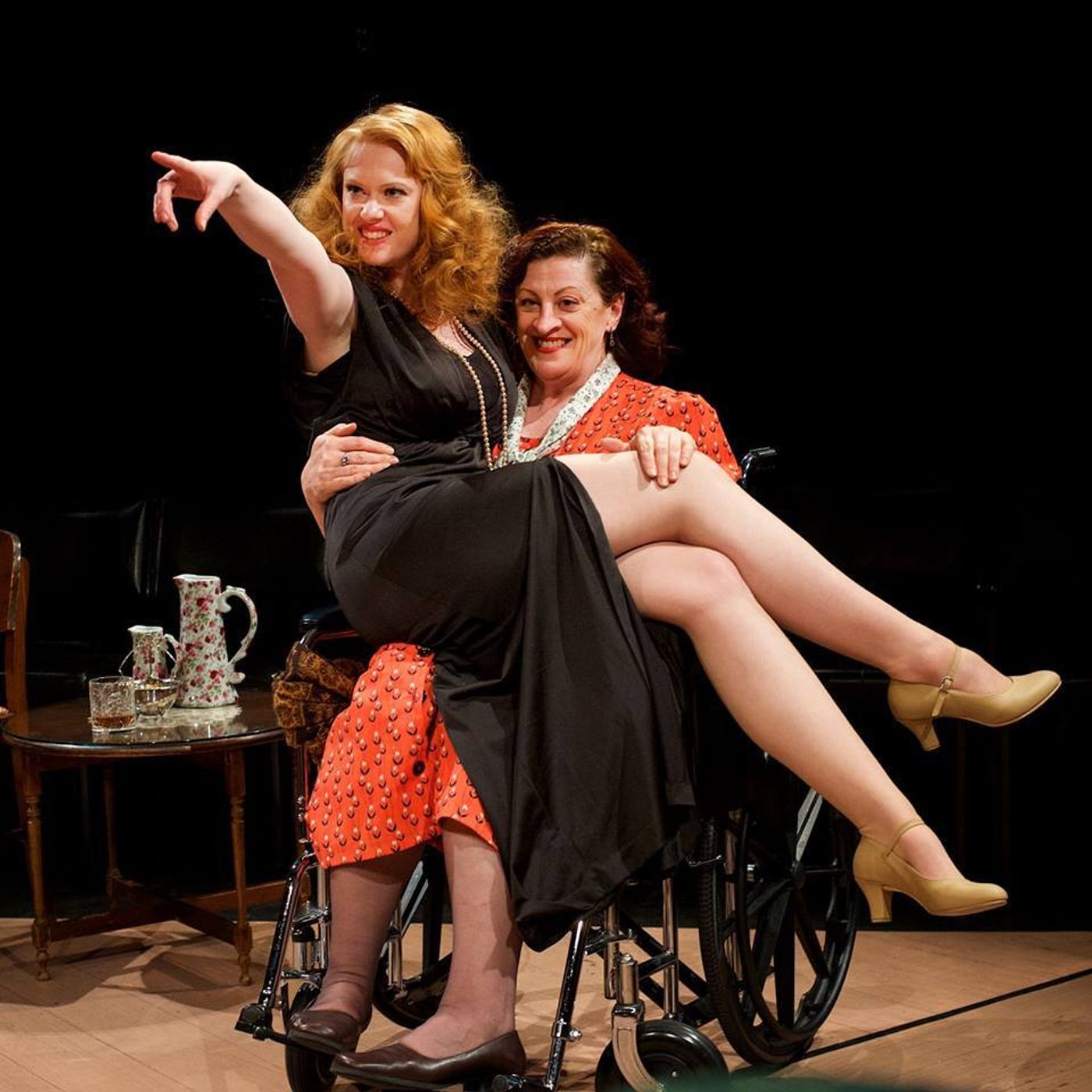Review: FEFU AND HER FRIENDS at Bakehouse Theatre
 Reviewed by Ewart Shaw, Saturday 23rd November 2018.
Reviewed by Ewart Shaw, Saturday 23rd November 2018.
Eight very fine women actors take to the stages of the Bakehouse, bringing an excellent ensemble to an enigmatic and mesmerising play, Fefu and Her Friends.
When I first read about this play I assumed that director, Joh Hartog, had found another interesting relatively unknown Central European play, translated into English. No, this intriguing play, by the American playwright Maria Irene Fornes, comes to us in its original form and language. Putatively set in 1935, and relocated to South Australia, it concerns a visit by seven women, all friends of Stephanie, known affectionately as Fefu, to her very comfortable home, with a large garden.
They are educationalists and psychologists, independently minded, of a feminist temperament, and almost all from comfortable middle-class origins. The reason for their visit appears to be a seminar, a fundraiser for some good social cause where they will dress up and deliver short speeches to the assembly, except that nothing is quite so clearly defined.
This encounter could be anywhere in the western world when that geographical term is shorthand for European culture. The one direct reference to Adelaide, 'Glenelg', jars on hearing because we know that it's been inserted for one purpose and that one only.
It could be happening right now. The issues that appear to be significant, float in an atmosphere of allusion and reminiscence.
The audience sits on both sides of the stage and on the raised seats of the main theatre. I sat with one of my totem animals, a green bunny, on one side of the action. We know that we will follow the action of the play through other spaces under the Bakehouse roof. We discover that we'll travel in small guided parties but that each group will follow a different sequence, and that each scene will be played out four times, with the sort of variations that will be possible for the performers.
The play begins with Fefu, played by Krystal Brock, a handsome blonde woman, dressed in a top and slacks, so like Katharine Hepburn, with her friends Christina, Josephine Pugh, and Cindy, Rahimah Russell. At one point, true the dictum that if there is a rifle onstage, it must be fired, Fefu shoots at her husband Philip, who is in their garden with his mates. Philip falls, but is unhurt, the rifle is loaded with blank cartridges, not live ammunition. Or is it? Fefu explains that Philip falls when he hears the bang. It's one of their little games. We never see Philip, or his mates. This play is about Fefu and her friends.
Julia, Lisa K. Lanzi, an older woman in a wheelchair, arrives. Her condition is the result of a mysterious hunting accident, in which she may have been shot by a careless hunter, but there's a strong implication throughout the play that it's an hysterical condition. Can she walk, will she walk, and at a critical point in the play, did she walk?
Three more guests rush in; Sue, Carol Lawton, Emma, Mykala Lynch, and Paula, Stefanie Rossi. The party is complete when Cecilia, Amanda Phillips, arrives. She is a little confused. Is this the right place?
The audience is sorted into groups. Mine is of eight, and I wonder about larger groups and their comfort and security in the smaller venues.
First, in the Studio Theatre, we encounter a croquet game, then we are led, precariously standing, into Josephine's room. She is lying on a single mattress, covered in a sheet recalling the nightmare details of her accident. In the next room, a demure French lesson is taking place. Warning, this scene includes two very funny bad puns. In the kitchen, however, we witness a confrontation. Cecilia and Paula have been lovers. It ended badly, maybe, and Cecilia wants to apologize, but Paula has allowed her life to proceed, while Cecilia is still trapped by their history.
As we proceed anticlockwise, a bowl of tomato soup with fresh herbs, for Julia, meets us going in the other direction. Fefu leaves one scene, and pops into another.
After a brief interval, we are led back to the main room. The seminar happens, after a fashion. Fefu admits to the loneliness of her existence. She confronts Julia about her accident. A shot is fired. Someone dies.
The plays antecedent are strong, Ibsen's Hedda Gabler, so many of Chekhov's women isolated on their estates, Ionesco, Barrie, Schrodinger. A Shakespeare song, Who is Sylvia?, could be who is Stephanie. Sonnet 14, sung on the croquet lawn, predicts "thy end is truth and beauty's doom and date". Is someone outside, Philip maybe, planning to cut down the cherry orchard?
While the issues of women's empowerment, intellectual and social independence are spoken of, there are deeper themes woven into the text, the very nature of our dependence on our friends for instance, and what they bring, what we expect, what we hope to give in return.
How it happens, I can describe; how elegantly dressed and designed by Tammy Boden, Stephanie Clapp and Christopher James, lit by Stephen Dean. What it is, well that's something of a mystery, and it will be different for everyone, as the inner scenes, though speaking the same words, will be different at every iteration. But then, this not a drawing room comedy of explicit intent, but another and magical encounter.
As a classically educated western male, I was touched by much of what I heard but sometimes elliptically, indirectly, from floating images. A woman of my age will have other responses, a much younger woman, will find something else. That richness and subtlety make this an impressive and memorable evening in Fefu's house.
Reader Reviews
Videos

